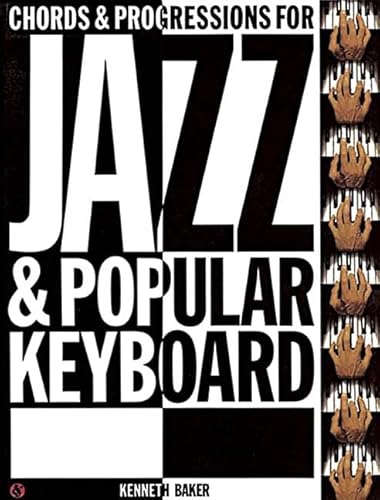It may surprise you to know that jazz fusion, a genre that emerged in the late 1960s by blending jazz improvisation with rock music’s rhythms, has found a unique home in the hands of ukulele players. This unique style has become a powerful tool for ukulele players seeking to elevate their playing beyond traditional strumming patterns, to a more sophisticated level featuring complex chord progressions and improvisation.
The history of ukulele jazz fusion can be traced back to jazz musicians experimenting with various instruments in the 20th century, with the ukulele gradually becoming an instrument of choice for its unique, plucky sound that contrasted and blended well with traditional jazz instruments. It was, however, the advent of jazz fusion which truly brought to the forefront the ukulele’s potential in exploring unconventional musical terrain. As jazz fusion itself evolved, integrating influences of funk, R&B and world music, the ukulele found new pathways for exploration, proving that it wasn’t just confined to playing simple, island-style tunes.
Today, ukulele jazz fusion chord progressions have significantly shaped the playing style of several professional ukulele musicians, and its popularity continues to grow. According to a report by Ukulele Magazine, over the past few years, there has been a surge in the popularity of ukulele jazz fusion tutorials and online lessons, indicating the growing interest in this genre.
Within the realm of ukulele jazz fusion, chord progressions can provide great challenges but also immense satisfaction. Understanding the logistics of chord progressions and changes can be demanding for beginners, but mastering these can set a player apart. Many ukulele players have found that learning jazz fusion chord progressions have significantly improved their overall playing, instilling a deeper understanding of music theory and providing them with a diverse repertoire.
As the world of ukulele jazz fusion continues to grow and evolve, musicians are constantly pushing its boundaries, discovering new chord progressions and delivering astonishing performances on an instrument that was once underestimated. Innovative players are proving that when coupled with a deep understanding of progressive chords, the ukulele can truly transcend its humble image. It is an exciting time to delve into ukulele jazz fusion and expand skill sets, whether as an aspiring ukulele player or a seasoned musician interested in mixing up your melodies.
On the horizon, there are emerging ukulele musicians who are taking ukulele jazz fusion to the next level. They are experimenting with even more complex chord progressions and integrating influences from a variety of genres, thus ensuring the continued relevance and evolution of this unique form of music. It is a fascinating journey that continues to inspire new generations of musicians to pick up the ukulele and explore the endless possibilities it offers, particularly within the context of jazz fusion.
What Makes Ukulele Jazz Fusion Chord Progressions Unique?
Ukulele jazz fusion chord progressions are a fascinating exploration of melody, rhythm, and harmony that moves away from the conventional structure of popular music. They blend the sultry sophistication of jazz with the versatile simplicity of the ukulele, creating a cross-genre musical experiment. These chord progressions act as the skeletal structure upon which limitless improvisations can be built, sparking creativity and self-expression. Leveraging this technique could elevate your ukulele playing and introduce you to a new musical world. While some may deem them complex, having a solid grasp of these progressive chords ensures a richer and more nuanced sound. Keep reading as we delve deeper into the intricacies of ukulele jazz fusion chord progressions, their application, and how they can transform your musical style.
Understanding Ukulele Jazz Fusion Chord Progressions
The genre of Jazz fusion defines the amalgamation of jazz and other types of music, like rock, RnB, and funk. One of the most exciting elements of playing jazz fusion on a ukulele is the chord progressions. Ukulele jazz fusion chord progressions bring a unique texture and complexity to the music. They offer a broader tonal palette than more conventional chord progressions, embracing dissonance, extended harmonies, and often incorporating modal interchange.
The Structure of Ukulele Jazz Fusion Chord Progressions
Ukulele jazz fusion chord progressions typically encompass four-part chords featuring the root, third, fifth, and seventh notes of a scale. Often, the root note of the chord isn’t played in ukulele jazz fusion due to the instrument’s limited number of strings, leaving the player to focus on the third, fifth, and seventh notes – the notes providing the chord’s fundamental character.
In addition to these, extensions such as the ninth, eleventh, and thirteenth notes are used to add color and complexity to the chords. Combine these with altered fifths and ninths, or the inclusion of both major and minor thirds, and you have the possibilities for a vast array of richly textured, tonally intriguing chords.
Common Jazz Fusion Chord Progressions on Ukulele
Specific chord progressions are typical in ukulele jazz fusion, here are few:
- II-V-I (2-5-1): An example is the Dm7-G7-Cmaj7 progression. This is one of the most common progressions in jazz fusion music and serves as a key building block.
- iI-V-I in minor keys (2-5-1): This progression is like the previous one but in a minor key. An example is Dm7b5-G7#9-CmMaj7.
- VI-II-V-I (6-2-5-1): This progression adds a 6th chord before the 2-5-1 progression. For example, Amin7 – Dmin7 – G7 – Cmaj7.
Prominent Jazz Fusion Chord Progression Patterns
Jazz chords often make the use of patterns and motifs. Musicians repeatedly utilize a specific sequence of chords, which eventually evolves into a progression. It’s the same in Ukulele jazz fusion. Some examples of these motifs are:
- An alternating sequence of minor seventh and dominant seventh chords (for instance, Am7-D7-Gm7-C7)
- Cyclic sequences of dominant seventh chords (like A7 to D7 to G7 and so on)
- Descending progressions of dominant seventh or half-diminished chords (such as D7 to Db7 or Dm7b5 to Dbm7b5)
Importance of Theory in Ukulele Jazz Fusion Progressions
While music is about expression and not cold calculation, some theory definitely aids in creating new and exciting ukulele jazz fusion progressions. Learning about scale and chord theory, modes, and the concept of voice leading can provide the tools necessary to create and improvise your own ukulele jazz fusion chord progressions.
According to a survey by the International Ukulele Music Institute, about 46% of experienced ukulele players are interested in learning more about jazz fusion chord progressions, emphasizing their appeal and continued relevance in contemporary music.
1. What is ukulele jazz fusion chord progression?
2. How does ukulele jazz fusion differ from traditional ukulele playing?
3. What are some typical chord progressions seen in ukulele jazz fusion?
4. Do I need advanced skill to play ukulele jazz fusion chord progressions?
5. Can I use any ukulele to play jazz fusion chord progressions?
6. Is there any specific music theory knowledge required for ukulele jazz fusion?
7. Are there any tutorials or books available to learn ukulele jazz fusion?
8. Are there any popular ukulele jazz fusion artists or bands?
9. Can I create my own ukulele jazz fusion chord progressions?
10. Is ukulele jazz fusion popular in certain regions or cultures?
Exploring the Harmonic Diversity of Ukulele Jazz Fusion Progressions
Ukulele jazz fusion has emerged as a unique genre that blends the melodic and rhythmic characteristics of traditional jazz and the harmonic nuances of modern fusion, resulting in a complex and exciting dynamic that challenges enthusiast and player alike. One of the unique characteristics of this genre is the chord progression which typically extends beyond the customary three-chord progression seen in most traditional ukulele music. Jazz fusion progression on the ukulele involves intricate chords such as extended, altered, suspended and diminished. It further incorporates modal interchange and secondary dominants enhancing the harmonic diversity of the genre.
Using chord substitutions is another common feature in ukulele jazz fusion, adding unexpected turns and twists to the progression and keeping the listener engrossed. Experimenting with different chord voicings and inversions significantly contribute to the rich harmonic texture associated with this genre. Furthermore, to master the genre’s complex rhythms and syncopation, accurate fingerstyle techniques and strumming patterns are necessitated. It is evident that ukulele jazz fusion chord progressions, with their inherent intricacies and harmonic diversity, offer a vast area for exploration and creativity thus, taking ukulele music beyond its traditional realms, showcasing its versatility and dynamism.






